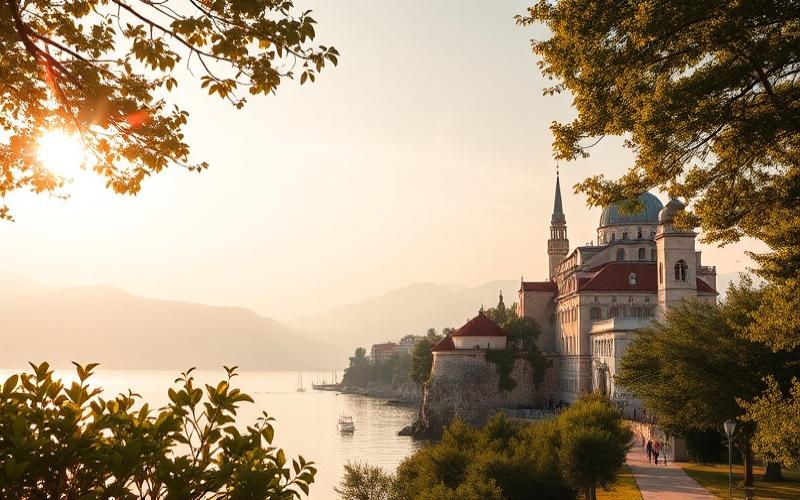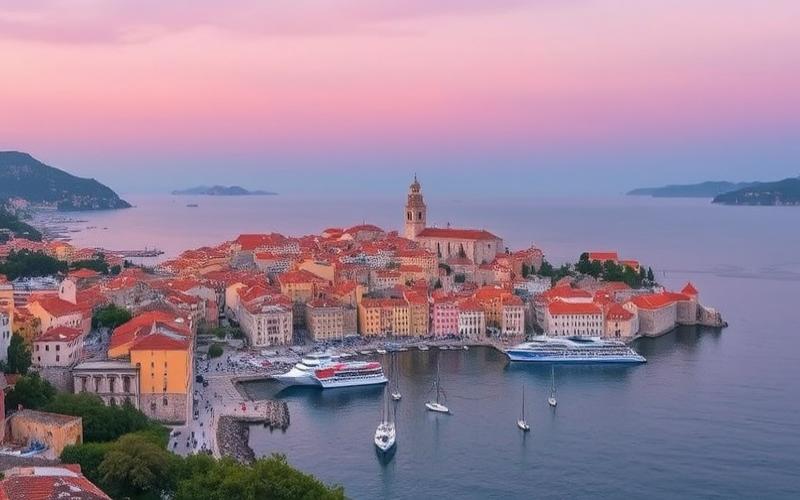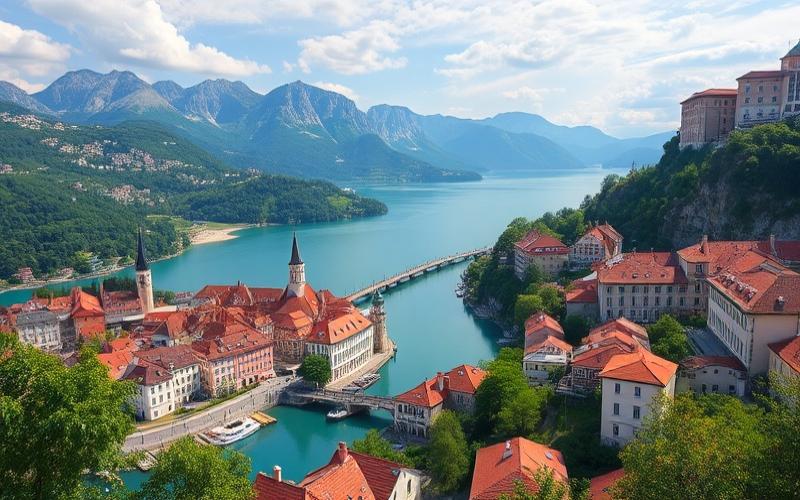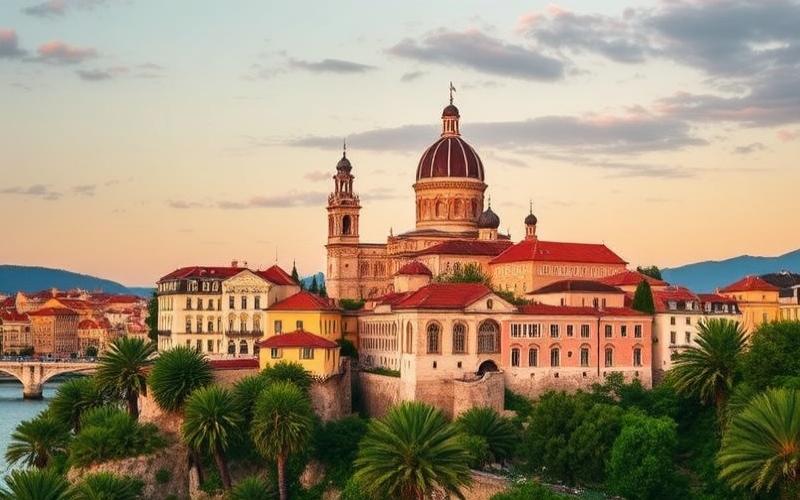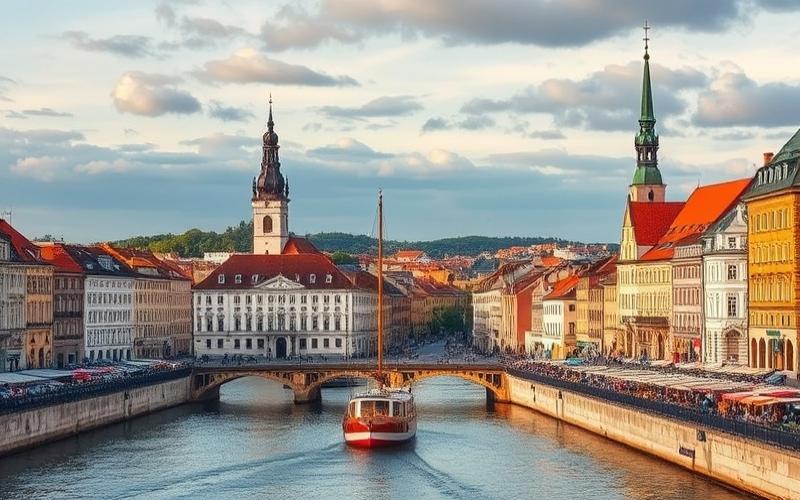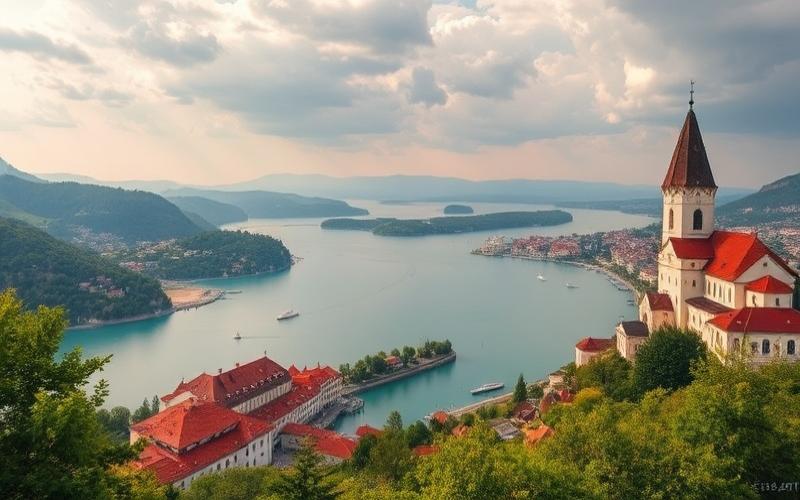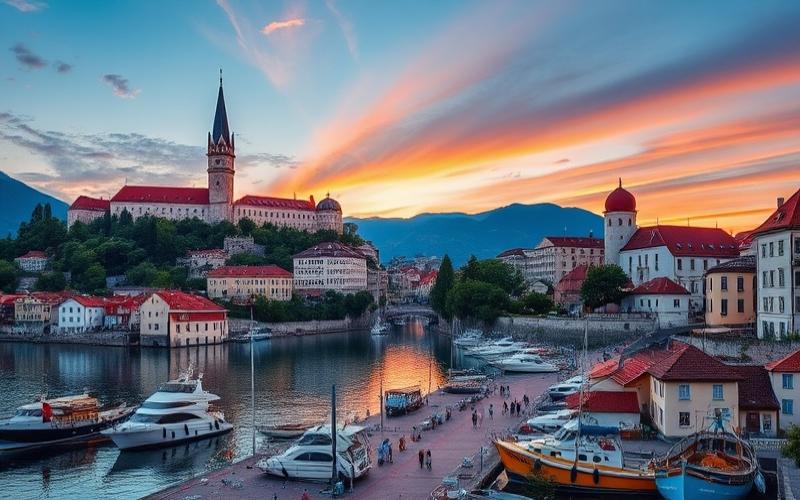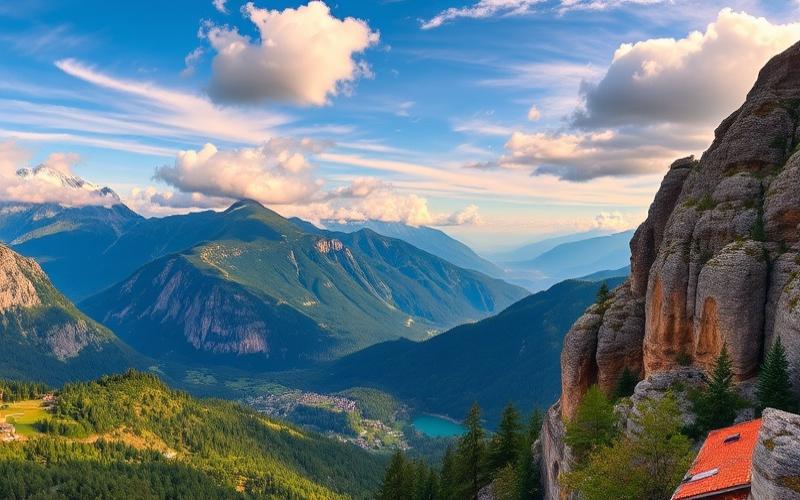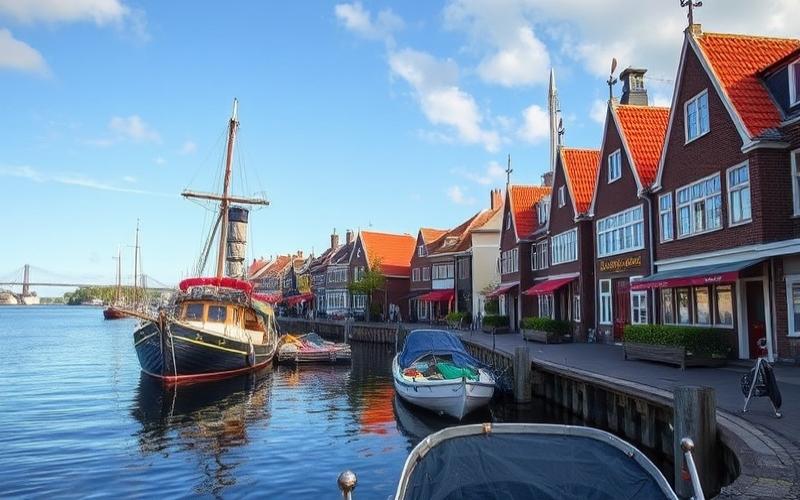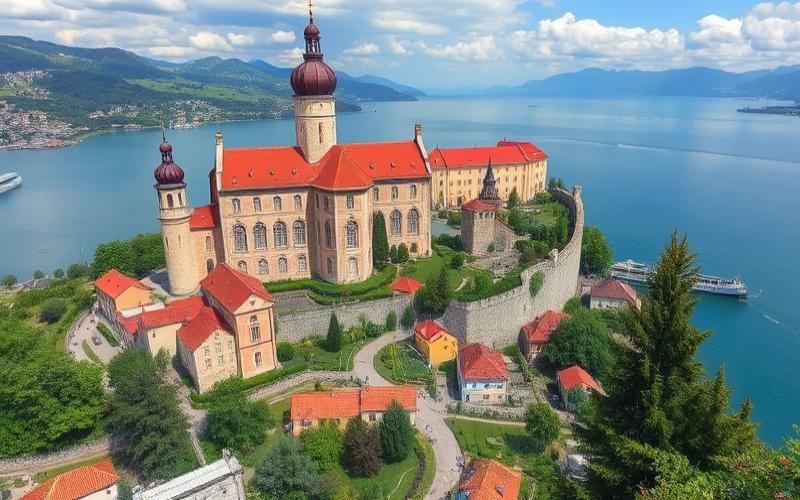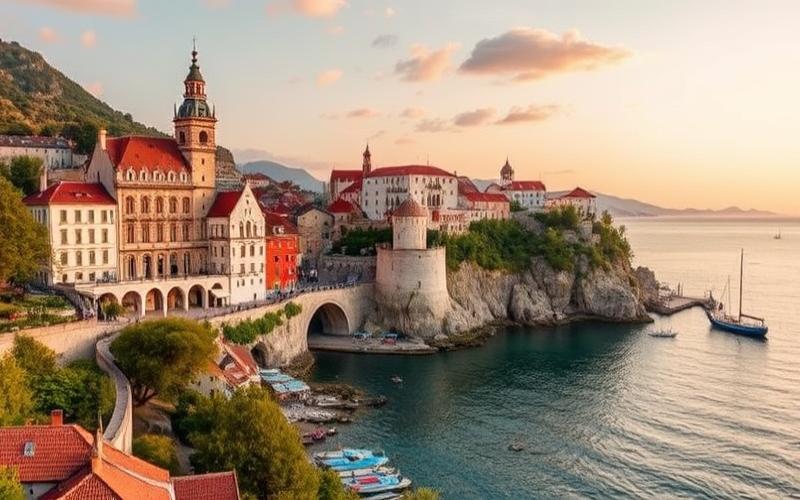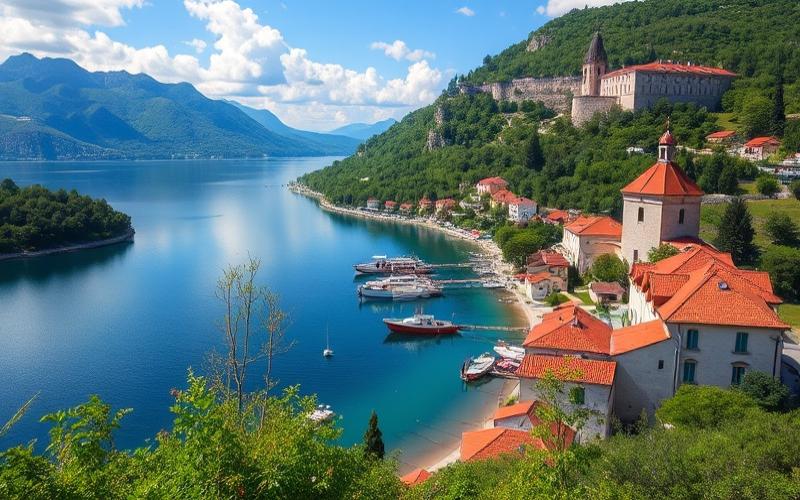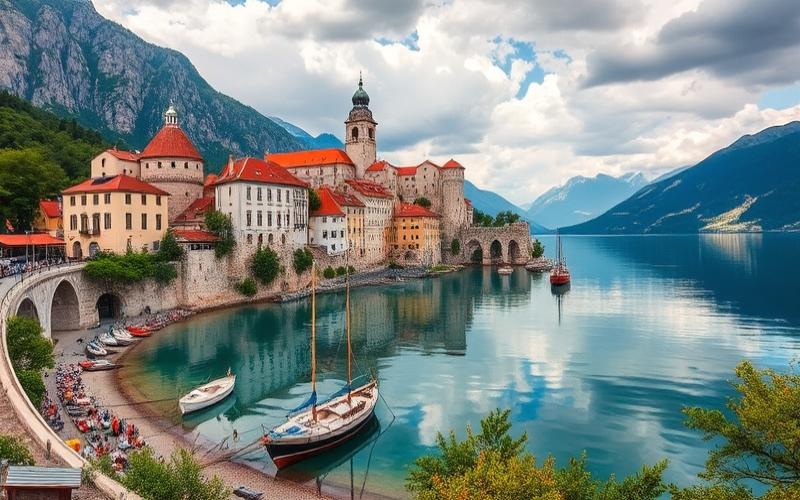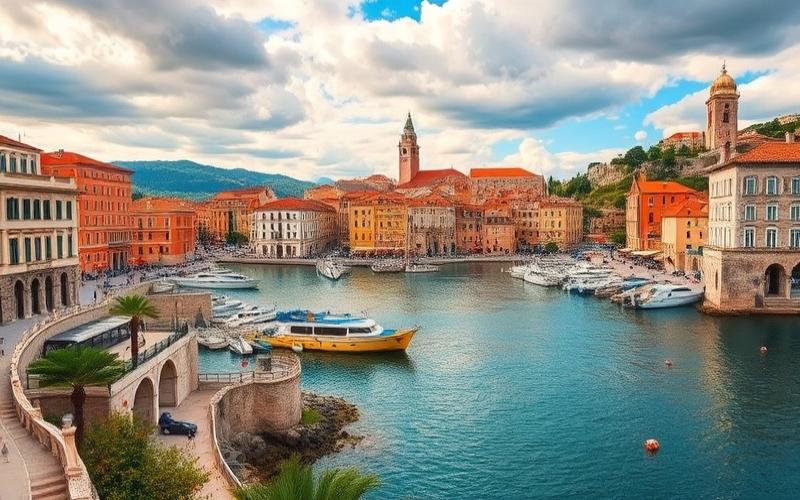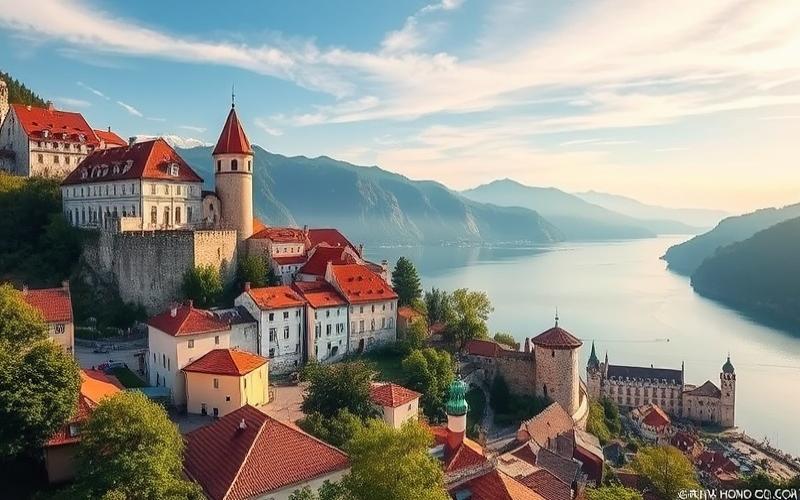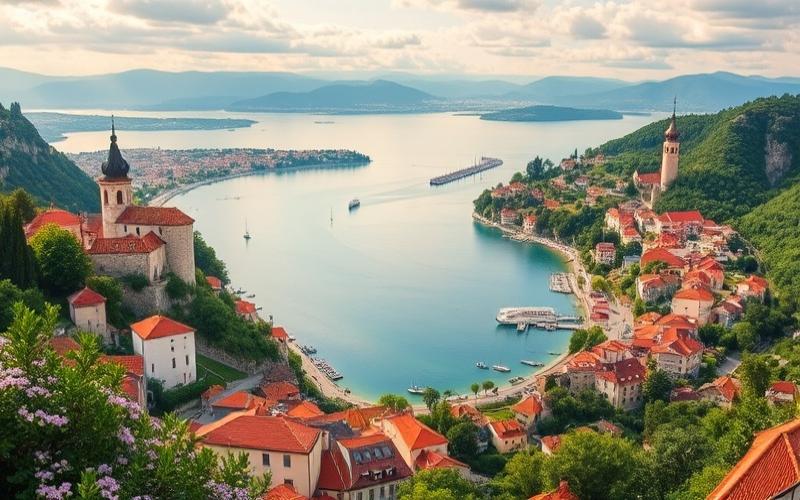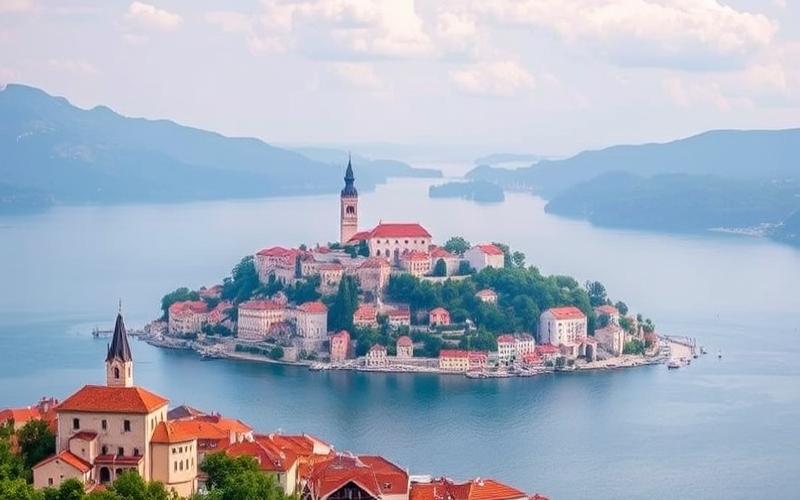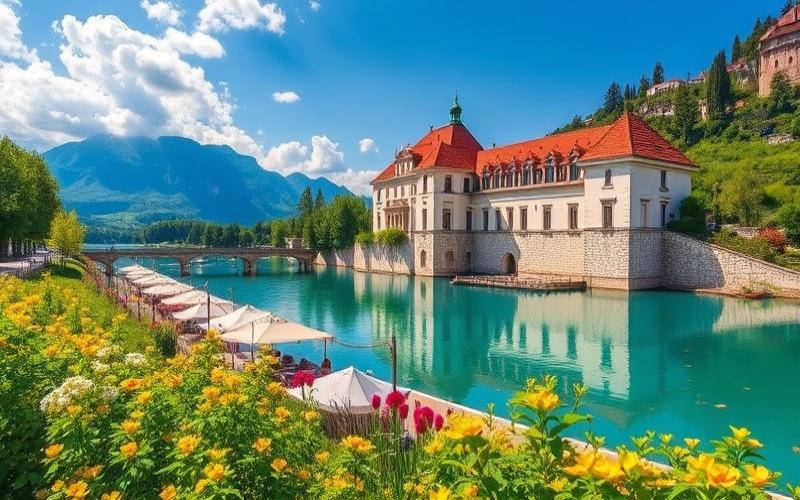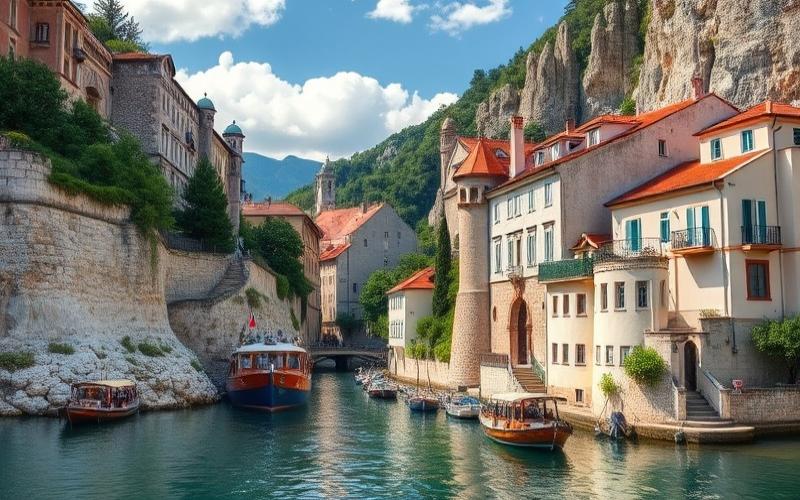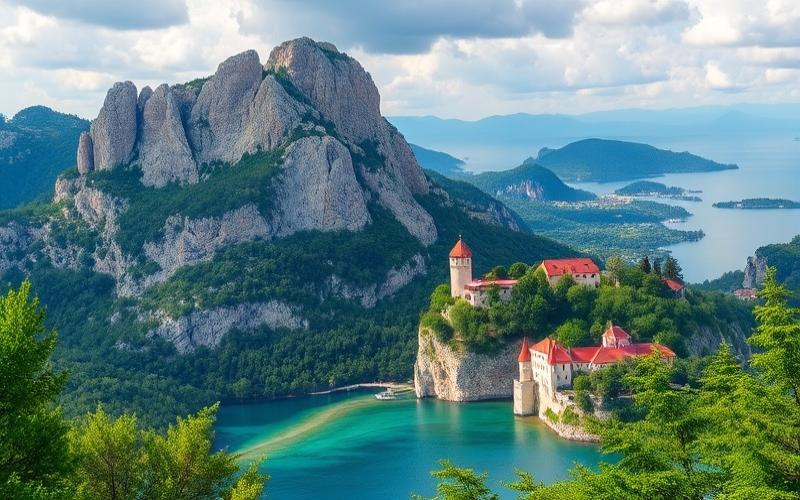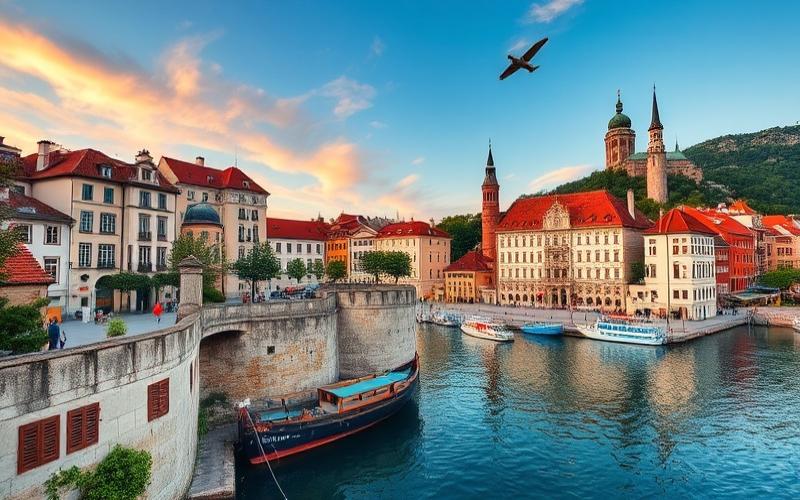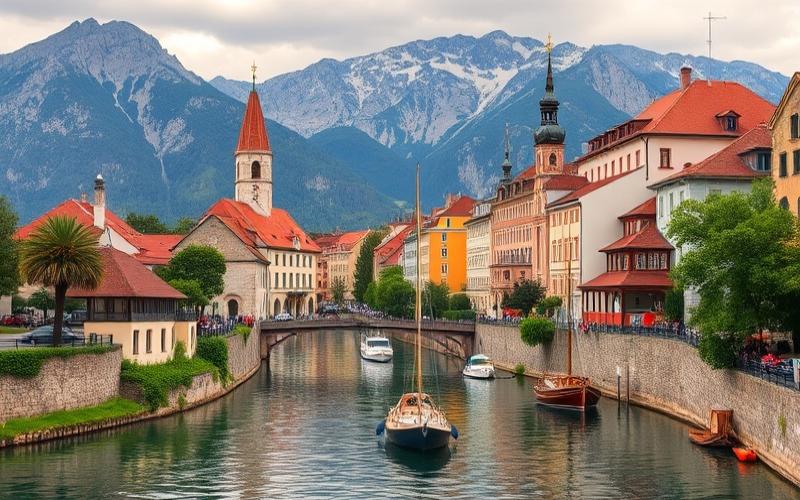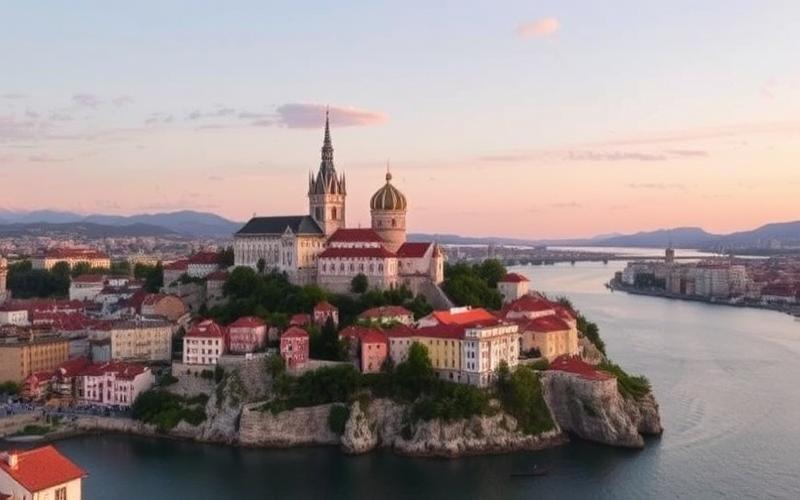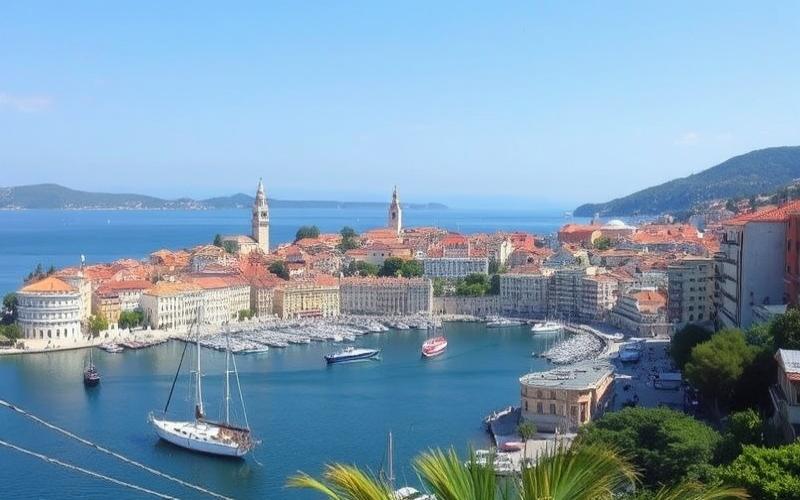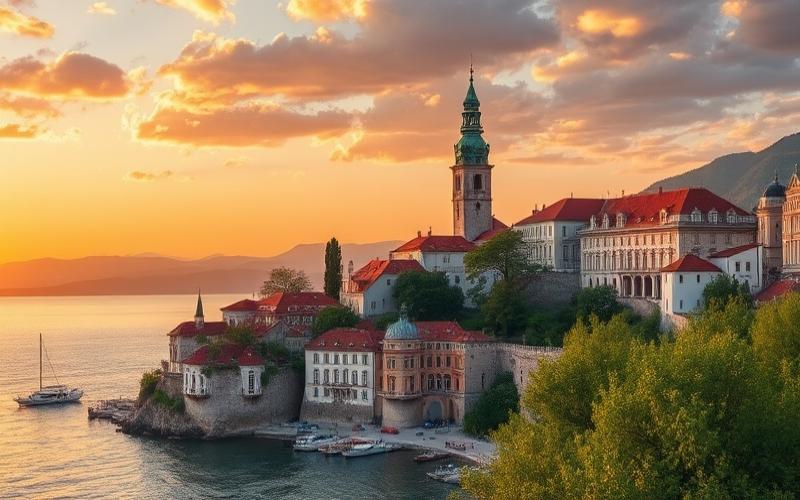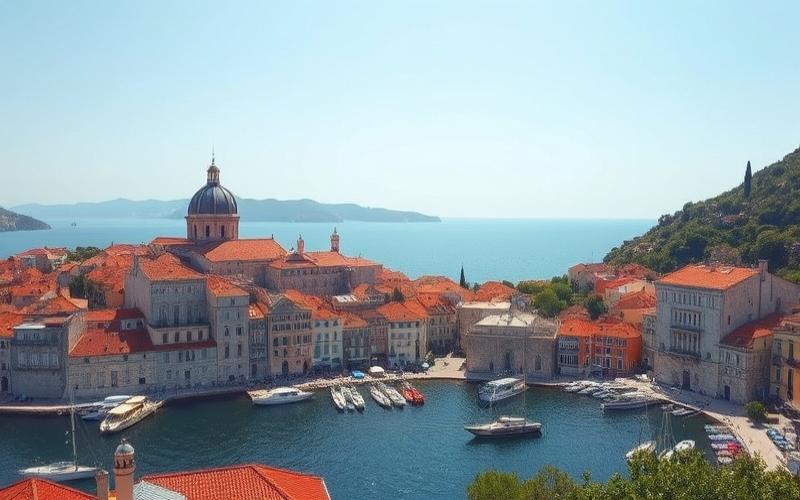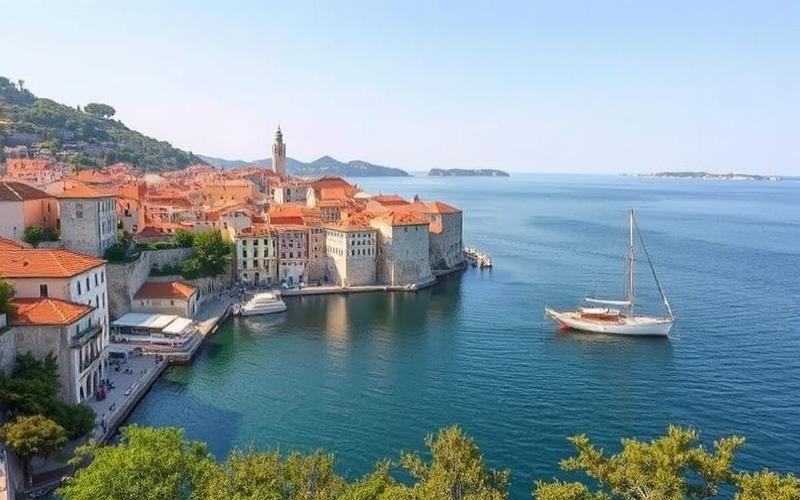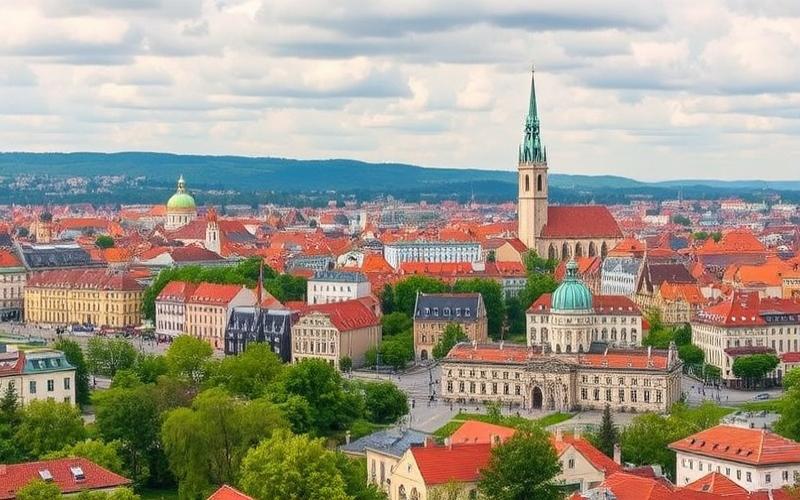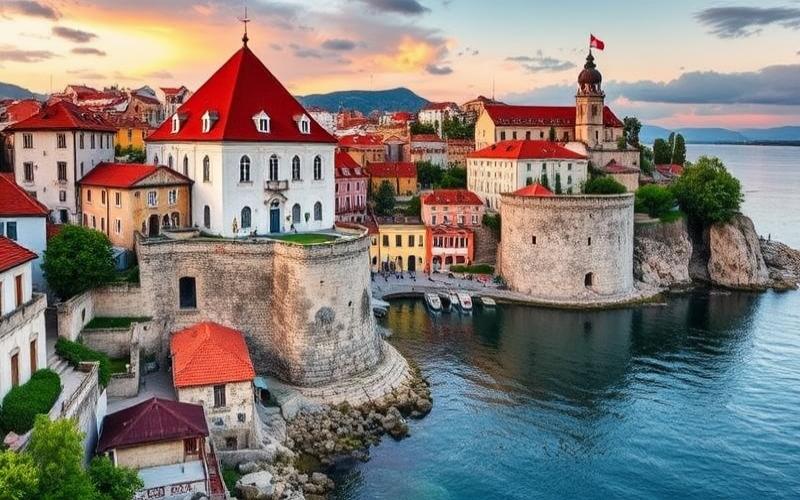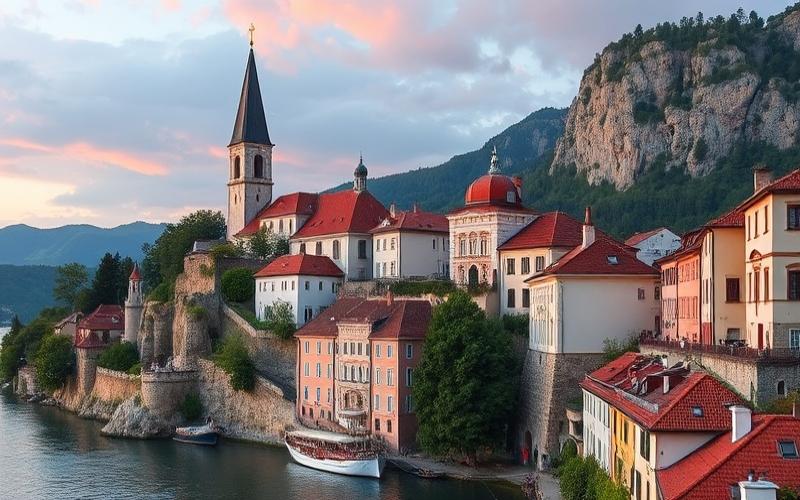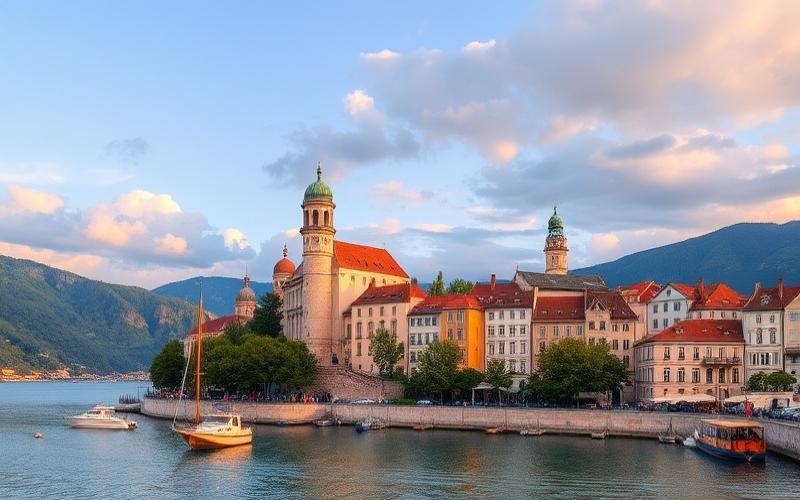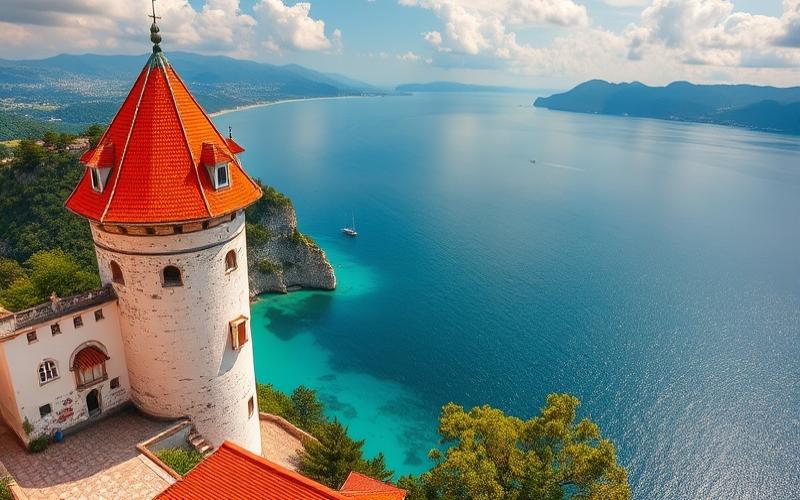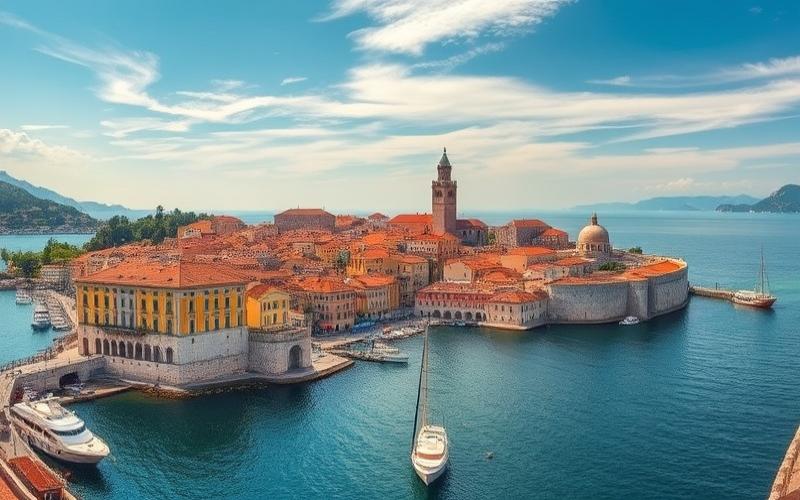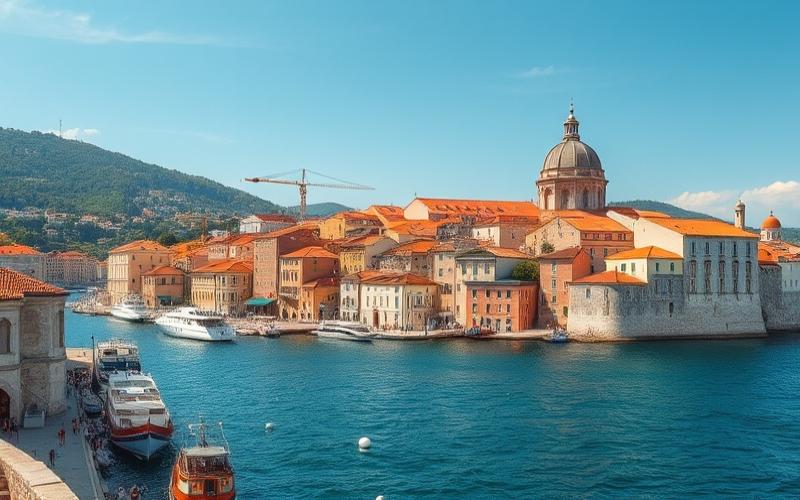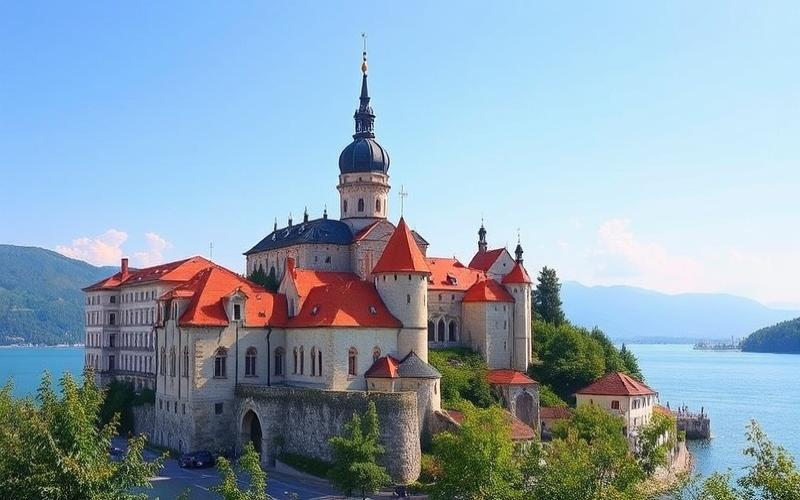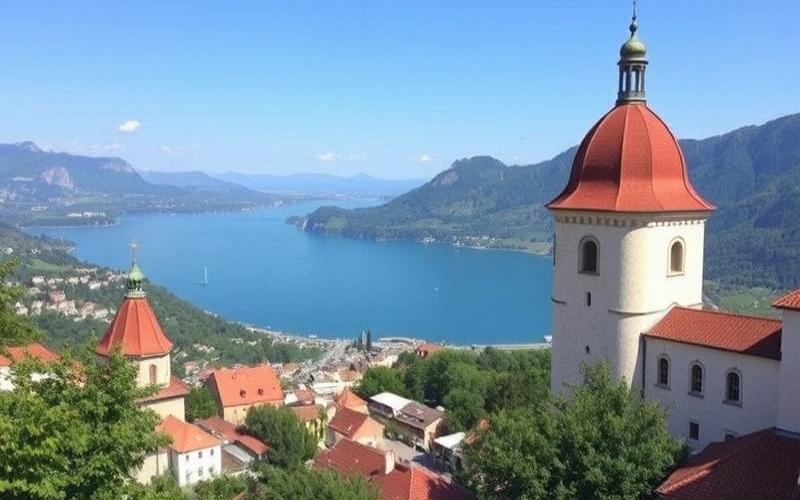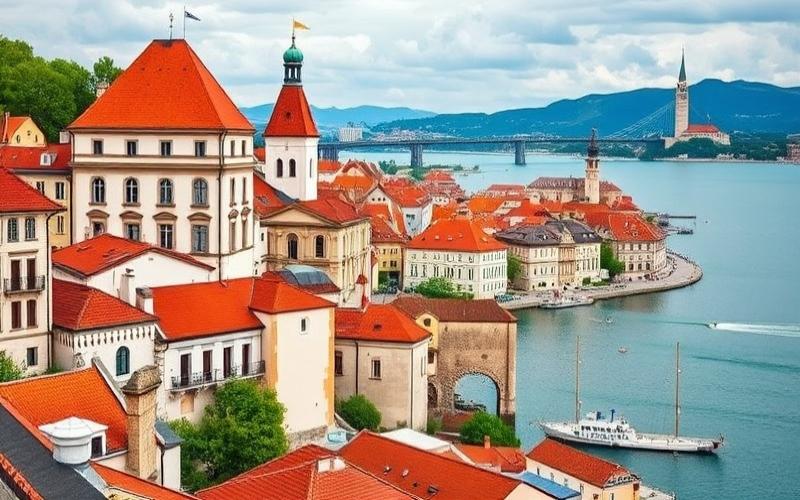
 Published on and written by Cyril Jarnias
Published on and written by Cyril Jarnias
Away from classic tourist routes, Croatia offers hidden gems, true witnesses to a rich and authentic culture. Investing in these picturesque villages not only preserves invaluable heritage but also provides unexpected economic opportunities.
In 2025, these places with old-world charm are emerging as attraction hubs for those seeking tranquility and authenticity. Between rehabilitating traditional buildings and sustainable development, this investment strategy promises returns while meeting the aspirations of clients searching for meaning and authenticity.
Exploring Rural Investment Opportunities in Croatia
Current Trends in Rural Investment in Croatia
The Croatian rural real estate market is marked by sustained growth, driven by European integration and the adoption of the euro. Rural areas remain affordable compared to the coast, with strong appreciation potential.
- Agritourism attracts investors eager to transform traditional farms or old houses into authentic tourist accommodations.
- Organic farming is experiencing growing demand, fueled by local and foreign consumers seeking quality and traceability.
- The renovation of old properties, particularly stone houses, appeals for their historical charm and adaptation to upscale stays.
| Sector | Main Opportunities | 2025 Outlook |
|---|---|---|
| Agritourism | Transformation of farms, short supply chains | Strong international demand |
| Organic Farming | Eco-certified conversion, exports to EU | Double-digit growth |
| Property Renovation | Enhancement of heritage properties | Stable seasonal rentals |
Tax Benefits and Government Support
- Local tax exemptions on renovations in certain classified villages or priority rural areas
- Government grants for conversion to organic farming (direct installation aid)
- European programs (ERDF funds) for rural development: infrastructure, agricultural digitalization
- Reduced capital gains tax rates if reinvested in the rural sector
Examples of Successful Projects
- Restoration of a traditional hamlet in Istria: creation of an award-winning agritourism complex offering eco-friendly accommodation and local products
- Organic farm in Zagorje: partnership between young farmers, exports to German/Italian markets
- Transformation of an old Dalmatian property into eco-labeled bed and breakfast
Economic Outlook for 2025
National GDP growth is expected to stabilize around +3%, while the real estate sector continues its expansion. Rural prices remain competitive but are trending upward (+7% annual observed in Istria). Off-season tourist demand is intensifying due to remote work and digital nomads. Foreign investment is encouraged by political stability.
Potential Challenges
- Sometimes insufficient road infrastructure in remote villages
- Limited access to public services (healthcare, high-speed internet)
- Still cumbersome administrative bureaucracy during land procedures
List of Major Obstacles:
- Poor digital coverage outside main routes
- Difficulty accessing bank financing without solid guarantees
- Local shortage of skilled labor
Recommendations to Overcome These Obstacles
- Prioritize municipalities already benefiting or soon to benefit from public investments (renovated roads, fiber optics).
- Partner with local partners well-versed in administrative procedures.
- Use European mechanisms dedicated to rural development as financial leverage.
- Integrate a sustainable dimension from the start: eco-certifications facilitate obtaining grants/reduced taxation.
- Promote versatility: mix tourist accommodation/agriculture/events to diversify income.
Investing in rural Croatia requires logistical anticipation but offers high potential through innovative agritourism, dynamic organic farming, and heritage enhancement adapted to new international tourist expectations.
Good to Know:
Rural investment opportunities in Croatia are expanding, with increased focus on agritourism and organic farming, benefiting from growing tourist interest in authenticity and sustainability. Renovating old properties also represents a popular option, supported by attractive tax incentives and government funding to revitalize rural areas and encourage economic activities. Successful projects, such as organic farms converted into rural lodgings, illustrate the economic potential of these investments. For 2025, economic prospects are promising, despite challenges related to infrastructure and access to services in some regions. Investors are advised to collaborate with local authorities and consider public-private partnerships to overcome these obstacles and maximize project success.
Authenticity and Heritage: An Asset for the Real Estate Market
The authenticity and heritage of Croatian villages are major assets for real estate investors in 2025, meeting growing demand for unique, preserved places with strong identity.
Unique Characteristics of Croatian Villages:
- Traditional architecture: stone houses, red tile roofs, narrow alleys and small squares, often restored using ancient techniques.
- Historical and cultural setting: Venetian heritage in Istria, Austro-Hungarian influences in Slavonia, Roman legacy on the Dalmatian coast.
- Preserved natural environment: proximity to the Adriatic Sea, forests or hills, classified or protected landscapes.
- Authentic local life: markets, festivals, living traditions and regional gastronomy.
| Heritage Element | Impact on Property Value |
|---|---|
| Stone Houses | Appreciation due to rarity, tourist appeal, potential for high-end renovation |
| Proximity to UNESCO or Historical Sites | Investment security, increased prestige, high seasonal rental demand |
| Village Authenticity | Strong market differentiation, appeal for buyers seeking unique and peaceful settings |
Importance of Authenticity in a Globalized Market:
- Investors increasingly seek unconventional yet charming destinations where cultural imprint is tangible.
- Authenticity becomes a key criterion, as it guarantees a stay or residence experience impossible to replicate in standardized large resorts.
- This trend intensifies as global tourism values local experience and immersion, leading to increased value of authentic properties and strong rental demand, especially on high-end platforms.
Concrete Examples of Croatian Villages with High Potential:
- Rovinj (Istria)
- Venetian architecture, classified historic center, colorful stone houses, Adriatic views, strong foreign investment demand.
- Pula (Istria)
- Roman amphitheater, ancient ruins, proximity to Brijuni National Park, wine and maritime tradition.
- Hvar and Korcula (Dalmatian islands)
- Medieval villages, flower-filled lanes, UNESCO heritage, preserved beaches, international tourist appeal.
- Motovun (Inland Istria)
- Hilltop town, cultural festivals, truffle grounds, vineyard landscapes.
- Ston (Pelješac peninsula)
- Medieval walls, historic saltworks, renowned oyster farming.
Favorable Economic and Tourism Aspects:
- Villages with strong heritage benefit from stable tourist flow and extended season, enabling high profitability for seasonal rentals.
- Croatian real estate market growth accompanies price increases in high-authenticity areas, while remaining competitive compared to other Mediterranean markets.
- Local policies support renovation of traditional buildings and heritage enhancement, sometimes offering tax incentives or restoration aid.
Investment in Croatian villages thus combines security, appreciation potential and emotional appeal, driven by a quest for authenticity in an increasingly internationalized real estate market.
Good to Know:
The authenticity and heritage of Croatian villages represent a major asset for the real estate market in 2025, due to their unique traditional architecture and rich historical and cultural setting. For example, villages like Motovun and Grožnjan in Istria, with their stone houses and cobbled streets, have become particularly sought-after for their picturesque charm and preserved authenticity, thereby enhancing appeal for real estate investments. In a globalized context, demand for unconventional yet authentic destinations continues to grow, as investors seek places offering distinct cultural experiences while promising heritage appreciation. Moreover, heritage renovation policies implemented by the Croatian government also stimulate interest in these locations. This renewed interest is supported by the growing dynamism of local tourism, ensuring sustainable economic profitability while increasing the flow of new visitors discovering Croatia’s hidden treasures.
Croatian Rural Regions: A Hidden Treasure for Investors
Croatian rural regions offer exceptional investment opportunities, driven by preserved nature, authentic villages and vibrant local culture. Far from saturated coastal markets, these territories remain largely unexplored, revealing remarkable potential for investors seeking attractive returns and high-value-added projects.
Major Assets of Croatian Rural Regions:
- Picturesque villages with authentic charm: Traditional stone houses, flower-lined alleys and shaded squares embody the soul of rural Croatia. This heritage attracts tourism seeking calm, authenticity and escape.
- Preserved natural landscapes: Wooded hills, clear rivers, olive groves or vineyards stretch across still underutilized lands.
- Dynamic local cultures: Traditional crafts (pottery, weaving), folk festivals and regional gastronomy enhance the terroir while creating immersive experiences for visitors.
| Specific Opportunities | Description | Potential Return |
|---|---|---|
| Agritourism & Eco-tourism | Conversion of farms or rural properties into nature-focused tourist accommodations. | Strong demand outside coastal season; international customer loyalty. |
| Sustainable Development (Green Energy) | Investment in solar/biomass energy or organic farming. | Increased government support; rapid valuation in European context. |
| Heritage Property Renovation (Secondary Residences/Retreats) | Purchase/restoration of historic houses for seasonal rental or resale. | Very affordable purchase price; high potential added value after renovation. |
Tax Benefits & Incentive Measures:
- Temporary corporate tax exemptions in certain disadvantaged areas
- Local tax reductions related to renovation of old buildings or tourism development
- Simplified real estate acquisition process with low transfer duties (~3%)
- No annual property tax nor capital gains tax after 2 years
Complementary Incentives:
- Facilitated access to agricultural land for European investors since July 2023
- Specific schemes around tourist hubs to encourage rural innovation
Summary List — Government Benefits:
- Grants for heritage renovation
- Targeted local tax relief based on project (rural accommodation/sustainable tourism)
- Administrative support for innovative projects
Expected Socio-Economic Impact
Investor arrival directly contributes to:
- Revitalizing the local economy — creation of sustainable jobs in construction, tourism and agriculture;
- Protecting cultural heritage — safeguarding old buildings through restoration;
- Supporting village communities, via local partnerships generating stable income;
- Expanding international visibility, positioning these villages as alternative high-end destinations.
Investing in Croatian rural regions not only yields attractive returns but also enables becoming an actor in local renewal while preserving precious heritage.
By betting on these still under-exploited but resource-rich territories, each investor actively participates in shaping a prosperous future where authenticity rhymes with profitability.
Good to Know:
Croatian rural regions represent a hidden treasure for investors seeking to tap into largely unexplored potential, offering unique opportunities particularly in sectors like agritourism and sustainable development. Authentic villages stand out through their picturesque charm and preserved landscapes, where dynamic local culture attracts visitors in search of authenticity. Investing in renovating old properties to transform them into retreat residences is especially promising, as these projects are often supported by attractive tax incentives and other benefits offered by the Croatian government to stimulate the local economy. By investing in these areas, stakeholders not only contribute to economic revitalization and cultural heritage preservation but can also expect interesting financial returns due to growing demand for authentic and sustainable experiences.
Disclaimer: The information provided on this website is for informational purposes only and does not constitute financial, legal, or professional advice. We encourage you to consult qualified experts before making any investment, real estate, or expatriation decisions. Although we strive to maintain up-to-date and accurate information, we do not guarantee the completeness, accuracy, or timeliness of the proposed content. As investment and expatriation involve risks, we disclaim any liability for potential losses or damages arising from the use of this site. Your use of this site confirms your acceptance of these terms and your understanding of the associated risks.

